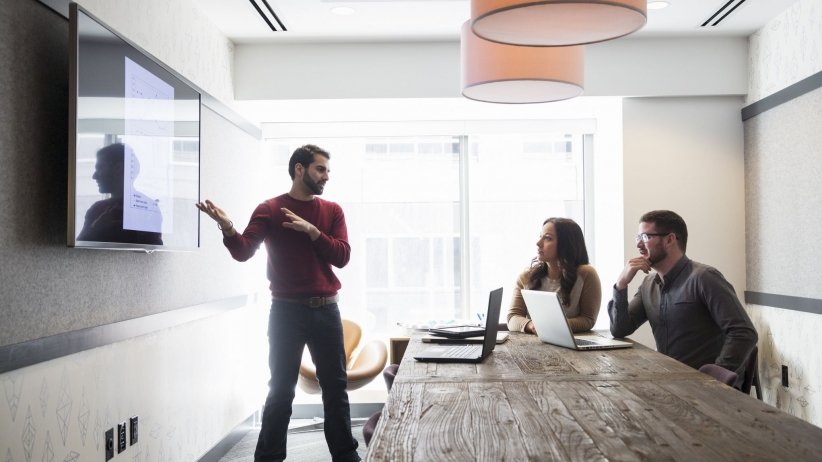When they watch it on a screen, it’s TV. When a viewer finds himself watching that, he knows he is watching a news program. Morning programs like The Today Show have different segments at different kinds of sets -- news, living room, kitchen. Several different sets were used throughout the three-year series, always with an eye to it being watched as if TV. Online webinar v. live presentation There are a lot of things you can do online that are impractical or too costly to do in a live presentation. With a webinar, however, they’re already watching TV, and cutting away to a brief video testimonial is like having Jimmy Fallon and a guest cut to a clip of the guest’s movie. You get to have him appear in your webinar 10, 100 or 1,000 times and he never gets tired -- fresh as a daisy every time. Remember, all of this is about leveraging a proven, powerful presentation that works delivered live and in person to audiences. This is about marrying and merging that presentation with the techniques and formats of direct-response TV infomercials to wind up with effective webinars, video sales letters or even live webcasts. When you have a powerful, effective presentation, you want to use it in as many different ways and as many different media as possible.

Find out how to optimize your website to give your customers experiences that will have the biggest ROI for your business. Register Now »
The following excerpt is from Dan S. Kennedy and Dustin Mathews’ book No BS Guide to Powerful Presentations. Buy it now from Amazon | Barnes & Noble | iTunes
When you convert a powerful presentation to a webinar and put in place a system to drive an audience to it, there are two big secrets to consider and keep in mind:
1. When they watch it on a screen, it’s TV.
I’ve done a great deal of work over the years with aired-on-TV half-hour infomercials — for information products and courses, for free preview seminars occurring in various cities, for moneymaking opportunities, for skin-care and cosmetic products, weight loss and fitness products and a wide array of other products and services. What I learned about the viewer and what works best to get and hold his attention, build interest and get him off the couch and to the phone with infomercials has given me a unique advantage in writing and producing video for webinars. I always think of it as TV.
People have certain expectations about TV. There are certain formats they’re very familiar with, expect, have been conditioned to accept, and are eager to give attention to. News broadcasts, daytime talk shows and cable news talk shows have definitive looks, feels and choreography to them. This makes the set very important. Most news and news-talk shows now have type streaming across the bottom of the screen, graphics — like “Breaking News” — and often big screens where video or charts and graphs are shown. When a viewer finds himself watching that, he knows he is watching a news program.
Daytime talk shows like Ellen usually have more of a living room feel to them. Morning programs like The Today Show have different segments at different kinds of sets — news, living room, kitchen. Most TV has a lot of activity and movement to it. The very static, two-people-across-a-desk show like Larry King or Charlie Rose is nearly dead. You’ll occasionally see an infomercial done this way, because it’s cheap to do, but you won’t catch any…

COMMENTS